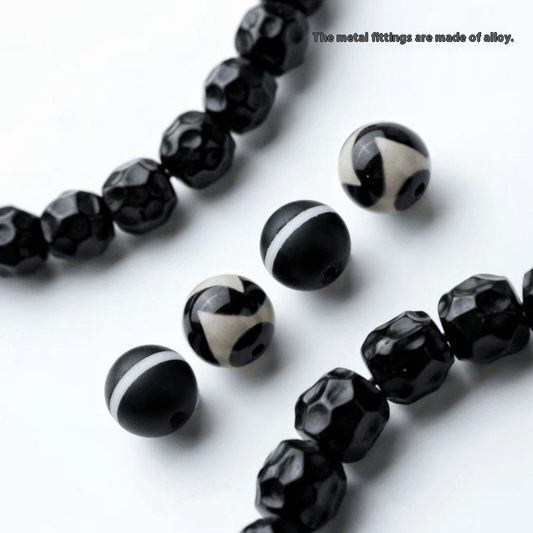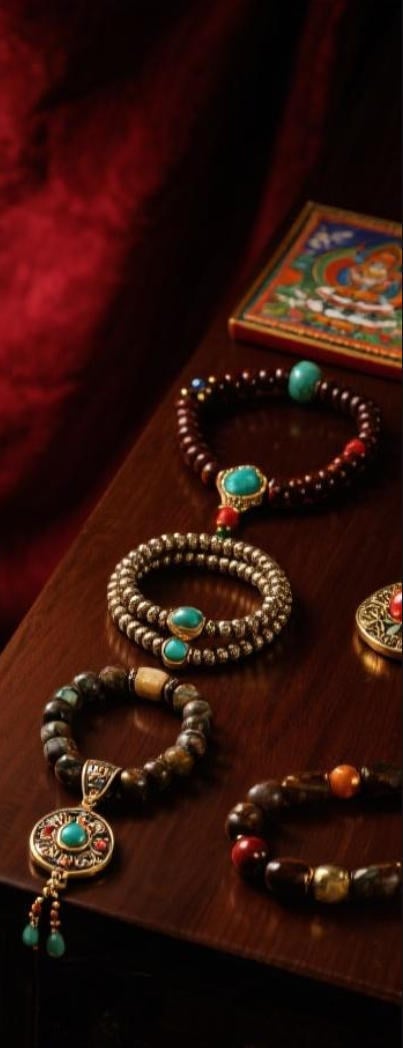
Amid the sophisticated tapestry within Himalayan spiritualism reside two notable emblems: the traditional thangka and bodhi prayer bead. Every one, in its special manner, acts as a gateway for transcendental understanding. The thangka, a vibrant painting, depicts deities, mandalas, or scenes from Buddhist lore, acting as a visual aid for meditation.
Conversely, the bodhi bead, often crafted from exquisite rocks, hardwood, pods, or hard tissue, is a tangible reminder of Buddha's realization under the bodhi tree. Holding these beads during prayer or meditation helps to focus the mind.
- Collectively, the thangka and the bodhi bead express the fusion of creativity and faith. They offer a tangible link to the historic sagacity of Tibetan Buddhism.
Secrets Held in Camel Bones
Throughout historic ages, age-old treasures whisper tales about a world long forgotten. These are not ornate objects originating in neglected empires, but modest camel bones carved with figures that enclose the mysteries of a bygone era. Each bone holds the echo from a life lived, a journey made, and a connection to the old wisdom that envelops us all.
- These
- Artifacts
- Represent
Unlocking the Symbolism within Thangka Masterpieces
Tangkas are striking paintings on canvas, meticulously crafted by Tibetan artists to depict exalted figures and scenes from Buddhist scriptures. Each detail within a thangka is laden with depth, forming a complex tapestry of visual narratives that guide the viewer on a introspective journey. The pigments used in thangkas are not merely aesthetic choices but carry profound connotations, representing different aspects of the Buddhist ideology. From the stoic figures to the intricate textures, thangkas offer a portal into the rich world of Tibetan Buddhism, inviting us to study upon its guidance.
- Classic thangka art often depicts key Buddhist figures such as Buddha Shakyamuni, Bodhisattvas like Avalokiteshvara and Manjushri, and enlightened beings from various factions of Tibetan Buddhism.
- Among these representations lies a wealth of awareness that can be interpreted by those who examine the symbolic language of thangkas.
The Buddha's Path to Enlightenment: Embodied in Beads and Bone
Upon the winding course to awakening, the Buddha adopted representations imbued with profound depth. Individual bead and bone held within them the essence of his wisdom, revealing glimpses into the fabric of reality. By way of their shape, the Buddha communicated profound truths that transcend the realm of physical perception.
From these meditation beads, crafted from ancient materials, emanated vibrations that harmonized with the intense powers within. The composition of a life form, meticulously transformed into charms, served as tangible tokens of the impermanence fundamental to all creatures.
Thangkas: Windows into Himalayan Spirituality
Thangkas brilliant paintings on cloth serve as strong representations of Himalayan spirituality. These intricate works of art, meticulously created with delicate brushstrokes, depict a vast array comprising Buddhist deities, mandalas, and scenes from revered scriptures. Each thangka is an instructive medium for meditation and contemplation, offering insight into the multifaceted teachings of Buddhism.
- They are often used in ritual ceremonies within
- inducing states of spiritual awakening.
- Thangkas operate as not merely decorative elements but rather gateways into the rich and compelling world of Himalayan spiritual traditions.
Walking with Bodhi Beads: Paths of Mindfulness and Compassion
Each jewel on a bodhi bead mala whispers tales of ancient wisdom, guiding us on a odyssey through the tranquil waters of mindfulness. As we clutch these intricately made beads, our fingers trace the contours of every one, anchoring our alertness in the present moment. The gentle feel of the beads against our palms serves as a tangible reminder to breathe, fostering a sense of calm.
- For every bead that passes between our fingers, we grow compassion, extending it first to ourselves and then outward to the world.
- Spiritual doctrines teaches us that mindfulness is a skill that requires patience and persistence.
Using the rhythmic repetition of mantra or simply the mindful surveying of the beads, we break free from the relentless chatter of the mind.
The practice incorporating bodhi beads is a delicate invitation to reconnect our connection with ourselves and the world around us.
Soulful Creation: Camel Bone Bracelets Enhancing Spiritual Progress
Determination acts as a profound catalyst in our lives, shaping our experiences and guiding us towards our ultimate purpose. When we combine this intention with the ancestral experience of crafting a camel bone bracelet, we create a potent synergy that can amplify our spiritual growth.Camel bone holds spiritual depth, representing strength. Its natural beauty and classic appeal serve as a constant reminder of the fundamental dynamic within each of us.We thoughtfully choose each fragment, imbue the piece with purpose. With every knot or link, we entwine our hopes, dreams, and aspirations for spiritual evolution. This act of creation becomes a devotional ceremony, harmonizing us with our inner wisdom and guiding us on a voyage of awakening.- Consider the colors and patterns within the camel bone to reflect your intentions.
- Feel the energy flowing through your hands and into the creation.
- Charge the completed bracelet under the moonlight or sunlight to amplify its energetic properties.
Exploring Camel Bone as a Buddhist Symbol
In the rich tapestry encircling Buddhist tradition, artifacts often hold profound symbolic meaning. Across these varied objects, camel bone stands out as a noteworthy and intriguing element. Throughout history, this material has been incorporated in the crafting in various Buddhist relics, each imbued with specific connotations.
- Viewed as a symbol of resilience and strength due to the camel's ability to endure in harsh environments, camel bone often exemplifies spiritual fortitude.
- Coupled with, the color and texture relative to camel bone are believed with some to hold auspicious connotations, reflecting purity and serenity.
Hence, camel bone has become a prized part of Buddhist lineage, serving as a tangible link to the profound teachings within this ancient faith.
Thangka Compositions: Acts of Holiness
Within the ethereal realm of Tibetan Buddhism, Thangka paintings emerge as sacred portals to enlightenment. These stunning works, meticulously crafted by skilled artists known as thangkapa, depict a myriad composed of vibrant deities, celestial beings, and mythical creatures. Each brushstroke saturates profound spiritual significance, narrating ancient tales and philosophical theories.
- Encompassing a vast repertoire of Buddhist iconography, Thangkas serve as both devotional objects and instructional tools. Reverent practitioners gaze upon these paintings during rituals and meditations, seeking to develop spiritual wisdom.
- Richly detailed with intricate details and vibrant hues, Thangkas are considered windows into the divine. Every painting acts as a symbolic representation of the Sage's teachings and the path to liberation.
By the use of their effective imagery and symbolism, Thangka paintings offer a glimpse into the rich theological traditions of Tibet. They are a testament to the enduring skill of Tibetan art and its profound ability to illuminate.
Embracing the Duality: Thangkas and the Cycle of Life and Death
Thangkas, lively crafted Tibetan hangings, communicate a serious study of existence’s temporality. Each intricate rendering depicts deities and beings engaged in the continuous expedition of life and death, a mosaic of birth, growth, impermanence, and renewal. The artists skillfully merge these concepts within the thangka's universe, highlighting the linkage of all things. Through vivid symbols, they invite us to contemplate on our own existence. The cycle endures, a progression of coming and going, accentuating the preciousness of each moment. By embracing this duality, thangkas teach us to acknowledge the beauty in both life's joys and sorrows.String of Mindfulness: The Significance of Bracelets in Buddhist Practice
In the intricate tapestry of Buddhist practice, seemingly plain objects often hold profound meaning. Among these are bracelets, which serve as tangible badges of devotion and commitment to the practice of Buddha. Worn on the wrist, a bracelet acts as a constant reminder of one's aspirations and intentions. It can suggest the impermanence of life, urging practitioners to remain rooted in the present moment. Some bracelets may hold sacred inscriptions, such as mantras or the names of Buddhas, which are considered to draw in positive energy and defense. Others frequently are made from resources with spiritual significance, like sandalwood or lotus seeds, enriching the bracelet's force. Ultimately, the significance of a Buddhist bracelet originates fashion mala bracelets far beyond its physical form. It becomes a powerful tool for quietude, a motivation to live in harmony with the teachings of Buddha, and a channel of one's unwavering commitment.